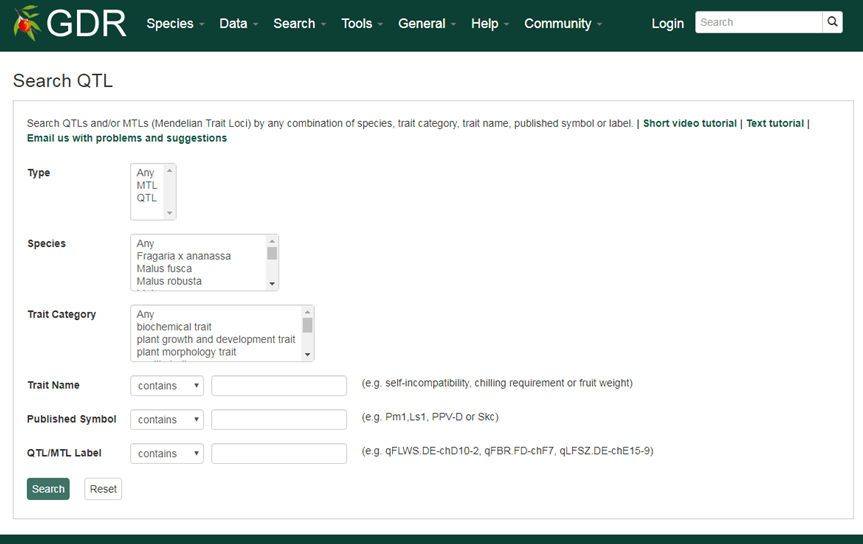Search QTL
Search QTL is a page where users can search for Quantatitive or Qualitative (Mendelian) Trait Loci in GDR.

Please Note: All the search categories below can be combined.
1. Type
Users can search trait loci by type, QTL or MTL.
2. Species
Users can search trait loci by species by choosing one of the options displayed in the drop-down menu. Users can choose multiple options by holding down the "Ctrl" key.
3. Trait Category
Trait loci are associated with one or more terms of eight trait categories (anatomy and morphology, biochemical, growth and development, quality, stature or vigor, sterility or fetility, stress and yield). Users can choose multiple options by holding down the "Ctrl" key.
4. Trait Name
Trait loci are associated with trait names that belongs to the Rosaceae Trait Ontology. The Rosaceae Trait Ontology contains extra terms that are necessary for the description of Rosaceae traits in addition to the terms in Trait Ontology (developed with a focus on the traits of grass species). Examples include self-incompatibility, chilling requirement or fruit weight. Users can search these fields for an exact match, contains, starts with or ends with the input, by selecting the desired option from the drop-down menu. Users can also search by aliases. The search is case-insensitive.
5. Published Symbol
Published symbols can be used to search for trait loci. Examples include Pm1,Ls1, PPV-D or Skc. Users can search these fields for an exact match, contains, starts with or ends with the input, by selecting the desired option from the drop-down menu.
6. QTL/MTL Label
Search by the QTL/MTL label given by the GDR team.
An example QTL qSI.TE-ch5.1 indicates that: